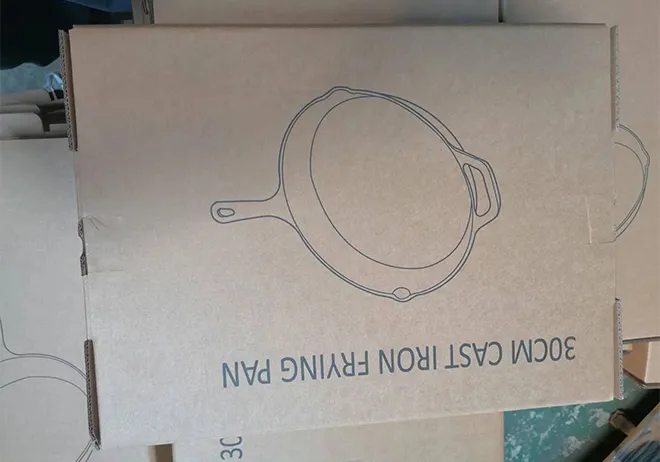
cleaning a skillet
How to Clean a Skillet A Comprehensive Guide
Cooking is an art, and a well-maintained skillet is one of the most essential tools for any home chef. Whether you favor cast iron, non-stick, or stainless steel skillets, proper cleaning and maintenance ensure their longevity and performance. In this article, we will discuss the best practices for cleaning different types of skillets, helping you keep your cookware in top shape.
1. Cleaning Cast Iron Skillets
Cast iron skillets are renowned for their heat retention and natural non-stick properties when seasoned correctly. However, they require specialized cleaning techniques to maintain their surface.
Step-by-Step Guide - Let It Cool After cooking, allow the skillet to cool slightly. Avoid drastic temperature changes, as they can cause cracking or warping. - Scrape Off Food Residue Use a stiff brush or a plastic scraper to remove stuck food. Avoid using metal utensils which can scratch the seasoned surface. - Rinse with Water Rinse the skillet under hot water. If necessary, use a small amount of mild soap, although many purists recommend avoiding soap altogether. - Dry Completely Thoroughly dry the skillet with a clean cloth or paper towel. Moisture can lead to rust. - Re-season as Needed If you see any dull patches or rust spots, apply a thin layer of vegetable oil and bake it upside down in the oven at 350°F for an hour to restore its seasoning.
2. Cleaning Non-Stick Skillets
Non-stick skillets are favored for their convenience, making them easy to clean. However, it’s essential to use the right tools to avoid damaging the non-stick coating.
cleaning a skillet

Step-by-Step Guide - Cool Down Let the skillet cool before cleaning. This helps prevent warping. - Wipe Down with Paper Towel Use a paper towel to wipe away any excess grease or food residues. - Use Warm Soapy Water Fill the skillet with warm, soapy water and let it soak for a few minutes. - Gentle Scrubbing Use a soft sponge or cloth to scrub the surface. Avoid steel wool or harsh scrubbing pads, as they can scratch the non-stick coating. - Rinse and Dry Rinse under warm water and dry with a soft cloth. For best results, avoid using the dishwasher, as it can degrade the coating over time.
3. Cleaning Stainless Steel Skillets
Stainless steel skillets are durable and resistant to rust and corrosion, but they can be prone to staining and discoloration. Here’s how to clean them effectively.
Step-by-Step Guide - Cool Down Allow the skillet to cool before cleaning. - Soak if Necessary If there are stubborn bits of food stuck to the pan, fill it with warm, soapy water and let it soak for a while. - Use a Non-Abrasive Scrubber Apply a non-abrasive scrubber and, for tough stains, a paste made from baking soda and water can be effective. This gentle abrasive will help lift stains without harming the surface. - Rinse and Dry Rinse thoroughly with hot water and dry immediately with a soft cloth to prevent water spots.
Final Tips for Skillet Maintenance
- Regular Cleaning Clean your skillets after each use to prevent buildup of grease and food particles. - Avoid Dishwasher While it may be tempting, avoid putting skillets in the dishwasher, particularly cast iron and non-stick pans. - Inspect for Damage Regularly check your skillets for scratches or warping. If a non-stick skillet shows significant wear, consider replacing it to avoid health risks associated with damaged coatings.
By following these cleaning protocols, you can extend the life of your skillets and ensure they perform optimally in the kitchen. Remember, a well-cared-for skillet not only enhances your cooking experience but also contributes to better-tasting meals. So, embrace these cleaning techniques and enjoy your culinary adventures!
-
Pre-Seasoned Cast Iron Camping Cookware Set | Zhonda CookwareNewsSep.01,2025
-
7-Piece Cast Iron Camping Cookware Set-Baixiang County Zhongda Machinery|Dutch Oven,Pre-Seasoned,Wooden CaseNewsSep.01,2025
-
7-Piece Pre-Seasoned Cast Iron Camping Cookware Set|Baixiang County Zhongda MachineryNewsSep.01,2025
-
Pre-Seasoned Cast Iron Camping Cookware Set-Baixiang County Zhongda Machinery Manufacturing Co., Ltd.|Durability&Even Heat DistributionNewsSep.01,2025
-
PRE-SEASONED DUTCH OVEN CAST IRON CAMPING COOKING SET-Baixiang County Zhongda Machinery Manufacturing Co., Ltd.|Outdoor Cooking, Cast Iron DurabilityNewsSep.01,2025
-
7-Piece Pre-Seasoned Cast Iron Camping Cookware Set-Baixiang County Zhongda Machinery Manufacturing Co., Ltd.|Pre-Seasoned Cast Iron, Wooden CaseNewsSep.01,2025


